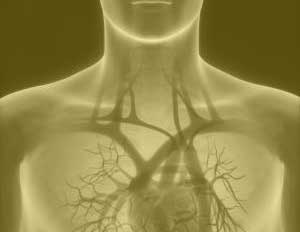- Home
- Editorial
- News
- Practice Guidelines
- Anesthesiology Guidelines
- Cancer Guidelines
- Cardiac Sciences Guidelines
- Critical Care Guidelines
- Dentistry Guidelines
- Dermatology Guidelines
- Diabetes and Endo Guidelines
- Diagnostics Guidelines
- ENT Guidelines
- Featured Practice Guidelines
- Gastroenterology Guidelines
- Geriatrics Guidelines
- Medicine Guidelines
- Nephrology Guidelines
- Neurosciences Guidelines
- Obs and Gynae Guidelines
- Ophthalmology Guidelines
- Orthopaedics Guidelines
- Paediatrics Guidelines
- Psychiatry Guidelines
- Pulmonology Guidelines
- Radiology Guidelines
- Surgery Guidelines
- Urology Guidelines
Pesticides exposure at workplace doubles risk of coronary artery disease

Chemicals exposure at workplace has known hazards and added to that list is increased risk of heart disease in certain ethnic groups.According to a study appearing in the journal Heart Pesticides exposure at workplace doubles risk of coronary artery disease.The exposure to metals and pesticides is linked to a heightened risk of heart disease including Atrial fibrillation,Heart failure and other diseases in Hispanic and Latino worker.
The researchers have based their findings on survey responses and medical test results for 7404 Hispanic/Latino workers aged 18 to 74 from Miami, Chicago, San Diego, and New York City.In the study the workers were enrolled in the Hispanic Community Health Study/Study of Latinos, which has been looking at potential risk factors for developing long term conditions in this ethnic group in the US.
The participants were enquired as to how often they had been/were exposed to organic solvents, metals, and pesticides each week. And they were quizzed about lifestyle factors, including smoking, alcohol consumption, diet, and physical activity levels.Language barriers and low levels of education, coupled with fears about job security and immigration status, may make this rapidly growing ethnic group especially vulnerable, say the researchers.
Their medical tests included a heart trace (ECG), weight (BMI), and measurement of blood fats and glucose levels.
Cardiovascular disease was defined as the presence of at least one of the following: coronary heart disease; atrial fibrillation ; heart failure; and cerebrovascular disease including stroke and TIA .
Between around one in 20 (4.7%) and one in 10 (8.5%) Hispanic/Latino workers were exposed to chemicals and metals in the workplace.
In all, just over 6 per cent had some form of cardiovascular disease, with coronary heart disease (4.3%) the most common diagnosis and atrial fibrillation the least common (0.7%).
Workplace exposure to metals or pesticides was associated with an increased likelihood of coronary heart disease and atrial fibrillation, but not heart failure or cerebrovascular disease.
After taking account of potentially influential factors, including lifestyle and workplace factors, exposure to pesticides was associated with nearly six-fold higher odds of atrial fibrillation, while exposure to metals was associated with nearly four-fold higher odds.
Exposure to pesticides was also associated with a more than doubling in the odds of coronary heart disease. No associations were found for exposure to organic solvents.
Some 5080 workers had been in their current post for an average of 10 years at the time of the survey. And in this group the association between metal exposure and the odds of atrial fibrillation was nearly five-fold higher, suggesting that cumulative exposure might be more harmful, say the researchers.
"Hispanic/Latino workers may be disproportionately exposed to cardiotoxic agents compared with other racial/ethnic groups and uniquely vulnerable to workplace hazards because of language barriers, low educational attainment and limited resources," they write.
"A lack of culturally appropriate job safety training, coupled with fears surrounding job security and immigration status could make Hispanic/Latinos engaged in hazardous jobs even more susceptible to occupational illnesses," they add.
This is an observational study, and as such, can't establish cause. And the researchers emphasise that the findings should be interpreted cautiously, given that they relied on subjective measures of exposure and survey data collected at one point in time.
But workplace chemical hazards are known risk factors for several serious illnesses, including cancers, and respiratory and neurological conditions, they point out.
"Associations between pesticides and CVD are less well studied, and although some pesticides cause oxidative stress, other mechanisms are likely to be important."
She concludes: "Exposure to metals and pesticides is common worldwide, and this study highlights the need to better understand the risks that these exposures cause, and to limit exposure in the workplace, thus promoting cardiac health."
In a linked editorial, Dr Karin Broberg of the Karolinska Institutet, Stockholm, Sweden, explains that: "Many metals are strong inducers of oxidative stress which may result in [cardiovascular disease] either directly or via increased inflammation.
For further reference log on to ;
http://dx.doi.org/10.1136/heartjnl-2018-314130

Disclaimer: This site is primarily intended for healthcare professionals. Any content/information on this website does not replace the advice of medical and/or health professionals and should not be construed as medical/diagnostic advice/endorsement or prescription. Use of this site is subject to our terms of use, privacy policy, advertisement policy. © 2020 Minerva Medical Treatment Pvt Ltd